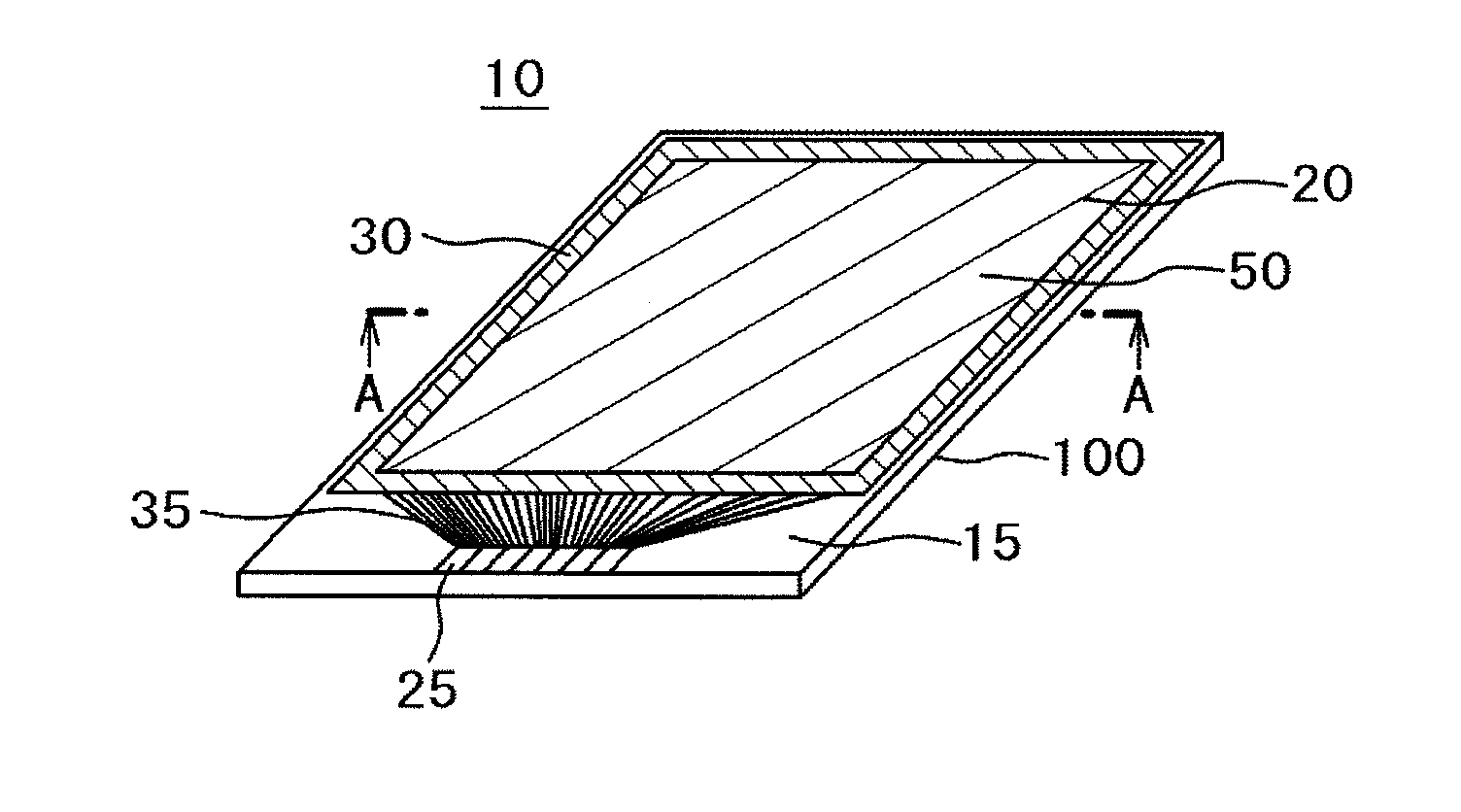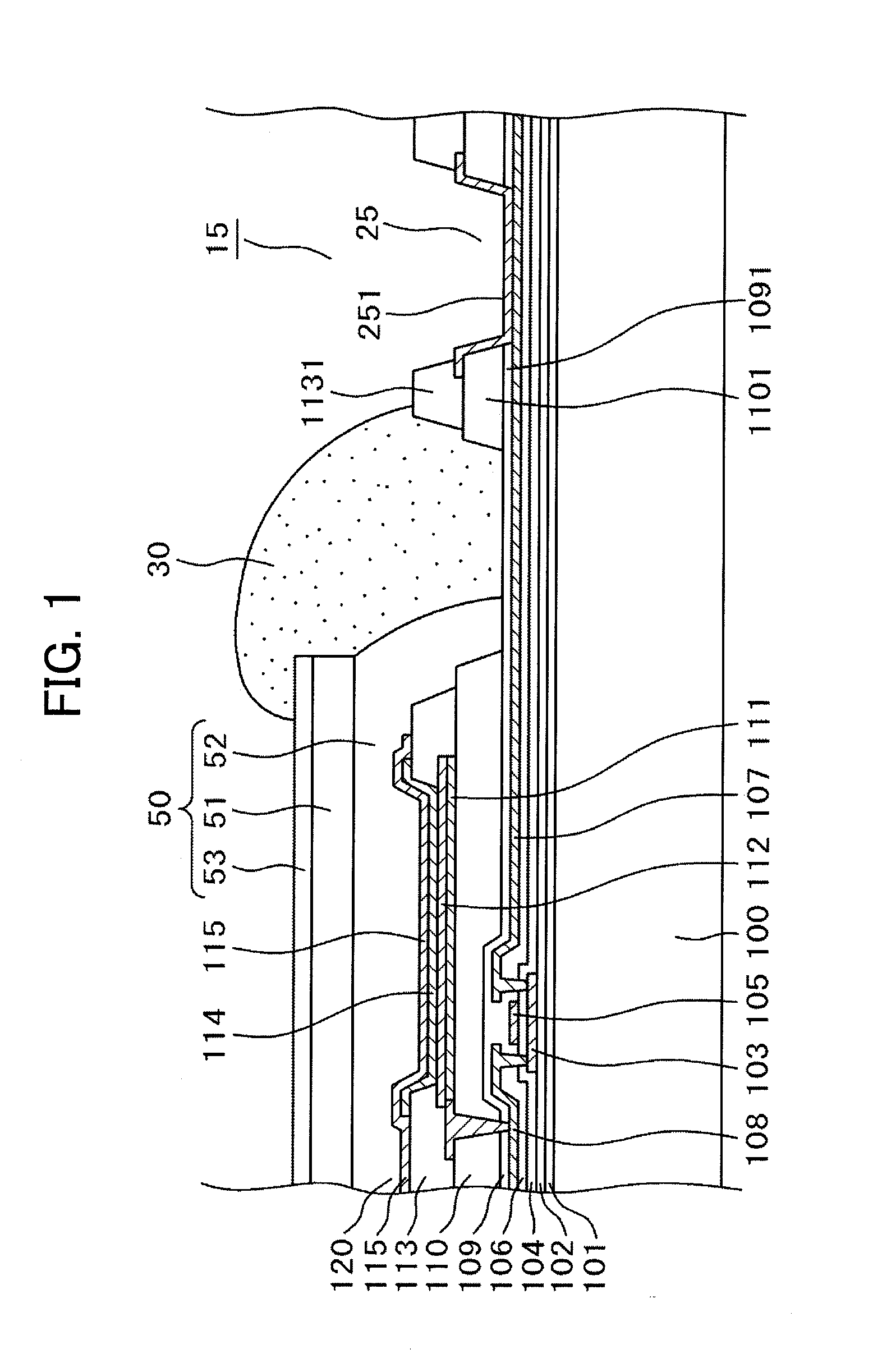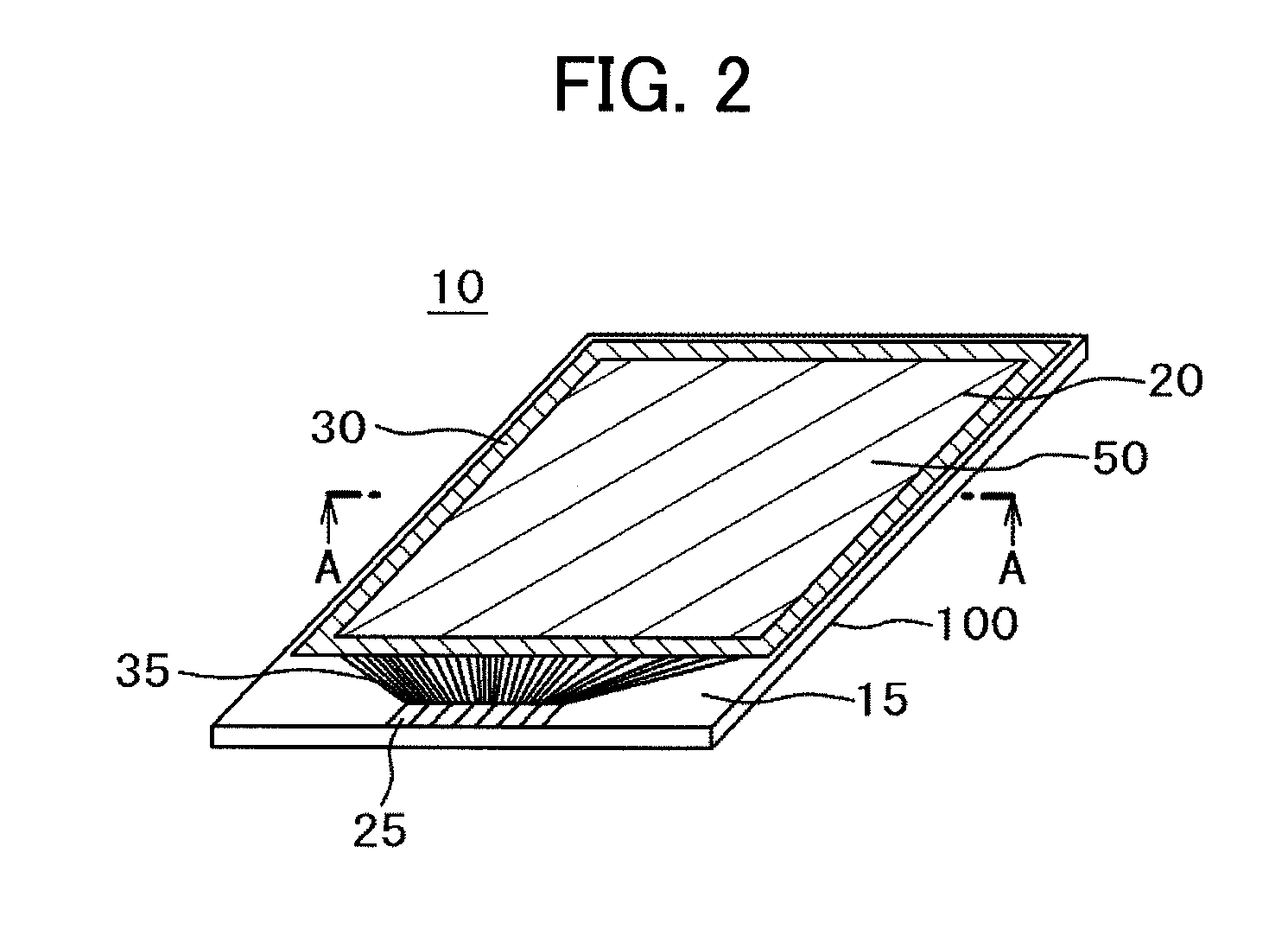Organic el display device
- Summary
- Abstract
- Description
- Claims
- Application Information
AI Technical Summary
Benefits of technology
Problems solved by technology
Method used
Image
Examples
first embodiment
[0038]FIG. 1 is a sectional view of an organic EL display device according to the invention, FIG. 2 is a perspective view of an organic EL display device to which the invention is applied, FIG. 3 is a chemical formula showing a reaction of metal alkoxide that is used as a sealing material, and FIG. 4 is a schematic sectional view of the organic EL display device in a shorter side direction in FIG. 2.
[0039]Referring to FIG. 2, a display region 20 and a terminal region 15 are formed on an element substrate 100 which is made of glass. The display region 20 is covered with a laminate film 50 in which a deposited film of silica (SiO2) or alumina (Al2O3) or a co-deposited film of them is provided on the surface as a barrier layer against moisture. A base member of the laminate film is made of for example polycarbonate, poly-ethylene terephthalate (PET) or the like. A periphery of the display region 20 is sealed with an inorganic sealing member 30 which is mainly made of alumina. In other ...
second embodiment
[0070]FIG. 5 is a sectional view showing a second embodiment of the invention, and FIG. 6 is a perspective view of the organic EL display device 10 according to the second embodiment. The organic EL element and a structure of the terminal region 15 illustrated in FIG. 5 are the same as those illustrated in FIG. 1 so that their descriptions will be omitted. Referring to FIG. 5, different features from the first embodiment shown in FIG. 1 are that the surface of the organic EL element is protected from moisture by a sealing substrate 200 which is made of glass instead of the laminate film 50.
[0071]Referring to FIG. 5, the sealing substrate 200 is adhesively bonded to the upper electrode with an adhesive layer 60 interposed therebetween. For example, an epoxy resin which is a thermosetting resin is used for the adhesive. When the element substrate 100 and the sealing substrate 200 are heated after the element substrate 100 and the sealing substrate 200 are bonded, the epoxy resin turns...
PUM
 Login to View More
Login to View More Abstract
Description
Claims
Application Information
 Login to View More
Login to View More - R&D
- Intellectual Property
- Life Sciences
- Materials
- Tech Scout
- Unparalleled Data Quality
- Higher Quality Content
- 60% Fewer Hallucinations
Browse by: Latest US Patents, China's latest patents, Technical Efficacy Thesaurus, Application Domain, Technology Topic, Popular Technical Reports.
© 2025 PatSnap. All rights reserved.Legal|Privacy policy|Modern Slavery Act Transparency Statement|Sitemap|About US| Contact US: help@patsnap.com



